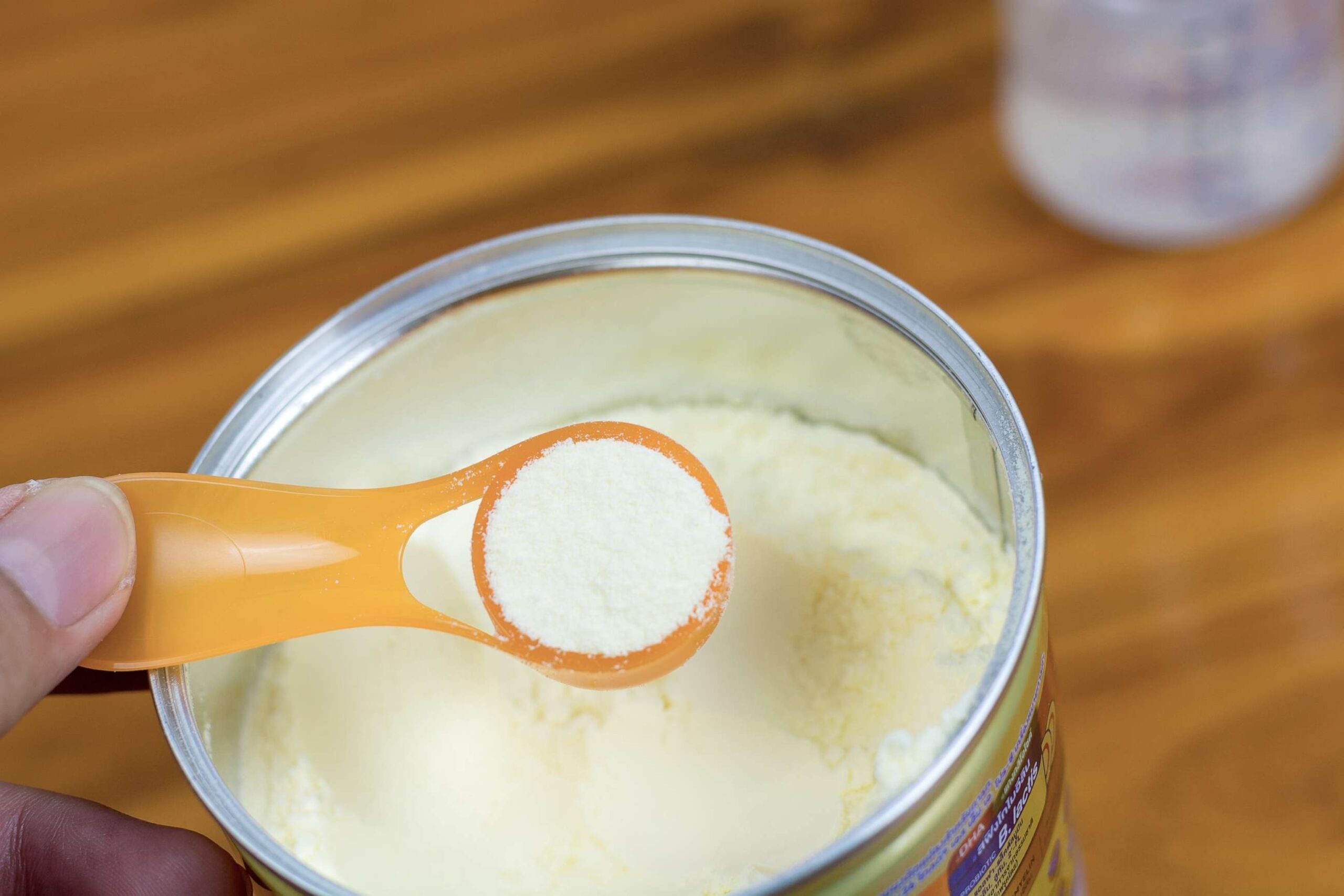Beverages marketed as toddler “formula” are unnecessary and some have questionable marketing practices, according to a new report from the American Academy of Pediatrics.
In recent years, the popularity of these formulas — referred to as Older Infant and Young Child Formulas (OIYCFs) — has risen significantly, according to research published in the journal Public Health Nutrition. The study found sales went up by 158% between 2006 and 2015. However, experts say there are several concerns surrounding their usage.
“Many parents mistakenly believe that OIYCFs offer something more, something unique that cow milk together with a varied diet with fortified foods can’t provide,” Dr. George Fuchs, professor of pediatrics and epidemiology at the University of Kentucky and lead author on the new AAP report, told ABC News. “This misconception can be largely attributed to the advertising and branding of these products.”
The AAP recommends babies drink infant formula or breastmilk until they are 12 months old and then transition to cow’s milk in addition to solid foods, which are typically introduced at about 6 months.
Toddler “formula” is sometimes marketed as a “transitional” or “weaning” formula for infants who are 0 -12 months old, according to the new report. But unlike infant formula, which must meet certain FDA guidelines for nutritional content, there are no standard nutritional requirements for toddler “formula,” the report says.
“Toddler formula is unnecessary for the vast majority of toddlers and its nutritional value is inferior to that of whole cow’s milk, especially when accounting for the additional sugar content of toddler formula,” Dr. Keyana Washington, a pediatrician with Gwinnett Pediatrics & Adolescent Medicine in Georgia, who was not involved with the report, told ABC News.

Sod Tatong/Getty Images
There are misconceptions about the drinks, according to Dr. Nagela Sainté-Thomas, a pediatric emergency medicine specialist from El Paso, Texas.
“One reason for their popularity is parents and caregivers believe these drinks provide nutrients similar to solid foods and if they have significant challenges integrating solids into their toddler’s diet, they can easily utilize this ‘nutritional’ substitution,” Sainté-Thomas, who was not involved in the AAP report, told ABC News.
In 1986, The World Health Assembly had already identified special formulas for older infants as unnecessary. Many global health organizations — including the U.S. Centers for Disease Control and Prevention and UNICEF, in addition to WHO — emphasize that a combination of breast milk, whole cow’s milk, water, and appropriate solid foods is nutritionally sufficient for most toddlers.
Toddler “formulas” are not necessarily dangerous or bad for children, the AAP said in its report. They can be part of a balanced diet for babies 12 months and older, but are not better than cow’s milk, the report said.
But some companies making OIYCFs imply that their products add an important part of a toddler diet, even though that’s not the case, according to the new AAP report.
Editor’s Picks
OIYCFs often appear very similar to infant formulas, according to the AAP report, which may cause confusion among parents and caregivers. Some companies use similar names, colors, designs, and even slogans for their OIYCFs and infant formulas, the report found.
The pediatricians ABC News spoke with say parents and caregivers should make sure toddlers have a varied diet that includes fruits, vegetables, whole grains, proteins, dairy, water, and either breast milk, infant formula, or whole cow’s milk.
Parents and caregivers should talk to their pediatricians about the role OIYCFs might play in their child’s diet.
“The decision to deviate from the recommendation to give whole cow’s milk starting at age 12 months is one that parents should make in consultation with their pediatrician,” Washington said.
Daniel A. Carnegie, MD, MPH, MBA is a preventive medicine resident at The University of North Carolina at Chapel Hill and a member of the ABC News Medical Unit.
